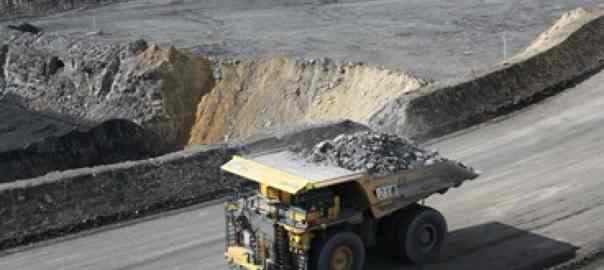India slated to become largest growth market for global energy and coal by 2040
Melbourne, November 2: Earlier this year, India allowed private-sector companies and international firms to undertake commercial coal mining in the country.
This announcement, along with the tight supply and demand scenario in India represents a lead role for the Australian mining industry, according to The Minerals Council of Australia (MCA)’s New Frontiers project report.
MCA’s New Frontiers report, based on research by Trading Nation Consulting outlines prospects for resources trade and solid engagement between Australia and India on mining-related investment, mostly based on mining equipment, technology and services (METS).
India’s increasing urbanisation, rising household incomes and industrial activity is expected to drive demand for greater volumes of key Australian resource commodities and it is but implicit that Australian METS firms will play a considerable role in this process.
According to the India Economic Strategy to 2035, demand for Australian resources will be strongest where domestic Indian reserves are limited – metallurgical coal, copper, and gold.
India’s demand for both metallurgical coal and copper is forecast to grow at around 5 per cent per year to 2035; over 90 per cent of this is expected to be met by imports.
Thus, India is one of the most important future markets for Australian METS companies.
According to MCA’s New frontiers: INDIA FOCUS with South and East Asia – a research study by Mike Adams, Nicolas Brown and Ron Wickes released last month; enormous opportunities await both Australia and India, despite big challenges.
The report notes that as India grows and seeks to modernise its mining sector, METS, is projected to increase its base across the board. Australian METS companies have a competitive edge, particularly in the coal value chain and beneficiation.
Capability of Australian METS in meeting India’s projected growth is expected to keep resources high in bilateral trade between India and Australia. The New Frontiers report noted that trends in India’s coal import market and Australia’s market share can have important implications for the growth in Australia’s total merchandise exports.
Australia’s merchandise exports to India are dominated by minerals and basic metal manufactures, estimated around $12 billion in 2017. Coal exports, valued at about $9 billion in 2017 continue to dominate Australia’s merchandise exports to India.
New Frontiers report further noted that over 2007-17, Australia exported mostly metallurgical coal over this period, holding a dominant market share in India’s thermal coal market.
With the mineral resources relationship expected to continue to be dominated by exports, rather than outbound Australian investment; MCA’s New Frontiers report notes two fundamentals on which Australia-India trade and investment relationship would depend:
- delivering on India’s expectations for an upgraded and broadened relationship that benefits both partners, and
- demonstrating our relevance to India as it re-defines its place in the world strategically and economically.
Underpinning the most important factor, the report finds that the economic relationship with India is that neither party should see it as a one-way opportunity.
“Prime Minister Modi’s signature Make in India agenda targets relationships that deliver improved access to resources, technology, skills and investments that help to build India’s domestic economy and expand its international reach.
“Australia has much to contribute to this agenda,” the report outlines.
The report highlights the expected surge in India’s energy consumption.
In the period to 2040, India is stated to become a powerhouse – as the largest growth market for global energy and coal.
With the pace of economic growth continuing to command the extent of thermal coal imports into India,
- thermal coal imports should increase significantly, along with
- demand for natural gas, predominantly in the form of liquefied natural gas, seems set to rise, as does
- demand for nuclear energy.
The study finds that with “limited, low grade and geographically remote domestic sources of uranium, India will need to import”.
Further, Indian official Steel Plan predicts that crude steel production could triple in the period to the early 2030s, which in turn would lead to per capita consumption rising to 160 kg – a whopping 167 per cent, during the same time.
The study found that India as a consumption powerhouse; is slated to be viable platform for METS medium-term goals for mining-related investment.
India, though an emerging economy to Foreign Direct Investment in mining and metals and machinery, yet has not attracted enough investment, until now, due to domination by state owned enterprises (SOEs); insecurity of minerals leases; bureaucratic measures and stifling competition.
Mike Adams, author of the report said that in the short term, “the easiest option for the majority of foreign resources companies is to trade with India and stay away from the bureaucratic and regulatory complexities of operating businesses there”.
The report however, notes that “developing METS opportunities in India, particularly for equipment suppliers, will probably require direct investment in India at some stage” and METS is best suited to achieve near- and medium-term goals for mining-related investment in India.

The New Frontiers report is identifying opportunities for Australia to boost mining and mining services exports and investment in Asia.
In a statement, Tania Constable, Chief Executive Officer said, “India represents a major opportunity but also presents big challenges for doing business – with inconsistent application of taxes and regulation, onerous bureaucracy and a tough business environment where price prevails over value for money.
“These challenges will not disappear quickly, and developing the Australia-India economic relationship will be a bumpy ride”.
Concurrently, the report called for three priorities to be met by Australian mining and METS, if the Australia-India mining relationship is to move to a higher level:
- Lever proposals that provide significant benefits both ways.
- Australia is not the only country courting India, thus some heavy lifting required by the Australian government.
- Over the medium-to-long term, build better understanding of India’s complex market scenario and the government should use all of the policy instruments at their disposal in a mining and METS strategy for India.
DM
Similar Posts by The Author:
- Problems of Arvind Kejriwal lie in the Charge-sheet against Manish Sisodia
- ABC Ram Temple coverage: ABC Ombudsman’s “No Bias” report – a slap on the face of Australian Hindus
- Defamation dogfights are dogging the leader: Should John Pesutto step down to come back later?
- ASIO boss Mike Burgess MUST name the rogue politician, academics
- Who can stop John Pesutto from becoming Premier of Victoria?

